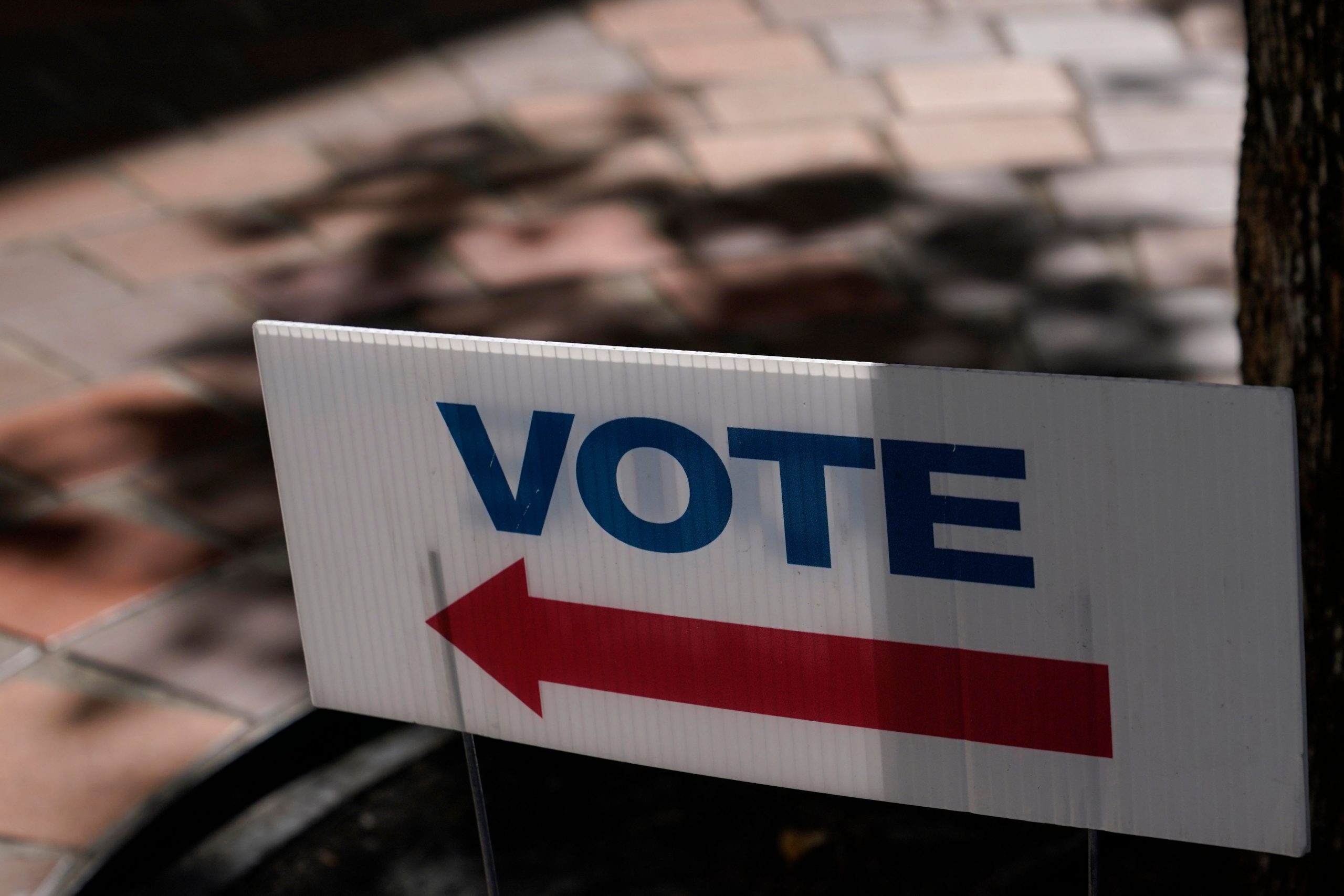Six states will control the political panorama in the midterm elections of 2022: Nevada, Arizona, Georgia, Michigan, Pennsylvania, and Wisconsin.
In each of these states, the number of pivotal contests will determine which party will control the Senate, the House, and the state legislatures. What happens in these states will have an impact on issues like abortion rights, economic policy, education, and climate catastrophe not just locally but also nationally.
Also read: US midterm elections 2022: Why the Nov 8 race matters
Arizona
Since Bill Clinton won Arizona in 1996, Biden is the first Democratic presidential nominee to do so in 2020. The only Democratic presidential nominees to win the state in more than 70 years are Biden and Clinton.
After Democrats made gains in Arizona in 2020 when Joe Biden won the state and Mark Kelly gained a Senate seat for them, Republicans are hoping to retake the state.
But the GOP isn’t supporting that cause by fielding moderate Republicans. Trump endorsed Republican candidates for governor and the Senate, Kari Lake, and Blake Masters, both of whom have questioned the validity of Biden’s victory in the state.
Latinos, a sizable voting demographic in Arizona who made up 19% of the state’s electorate in 2020, could ultimately decide these close races. With the support of this crucial voting demographic, Biden defeated Trump, garnering 61% of the Latino vote to Trump’s 37%.
In order to keep their Senate seat and win the governorship, Democrats must do well in Maricopa County. The majority of Arizona’s registered voters reside in the county, which includes Phoenix. The county, which is predominately white collar and has a sizeable high-tech economy, has historically voted Republican but has recently been shifting towards Democrats.
Also read: 2022 US Midterms: What happens if Republicans regain control of the House, Senate?
Georgia
The only instance a Democratic presidential nominee has won the state since native son Jimmy Carter was on the ballot was when Biden won Georgia in the 2020 presidential election, making him the first Democrat to do so since Bill Clinton did so in 1992.
Elections in Georgia may be quite tight, as evidenced by the last two cycles, and this is probably not going to change this year. Georgia won the race for Senate control in 2020, and a similar outcome could occur in 2022.
Democrats Jon Ossoff and Raphael Warnock won seats in the Senate during the previous election cycle, giving them control of the chamber. Warnock will now face off against Trump-backed football player Herschel Walker in a race for a full term. Walker has maintained his GOP backing despite a number of controversies.
Gov. Brian Kemp, a Republican, overcame a primary challenger backed by Trump this cycle despite rejecting his false claims about the 2020 race. In 2018, he narrowly defeated Democrat Stacey Abrams to win his first term in office. Abrams refused to yield, and the two will square off once more in November. However, this time, Kemp is running as a Republican who opposed Trump. Abrams would become the first Black woman governor in American history if she prevails.
Also read: Midterms 2022: What is the US Congress? Understanding the legislative divide
Michigan
After Donald Trump emerged as the first Republican to win the state since George H.W. Bush in 1988, Biden reclaimed Michigan for the Democrats in 2020. Michigan was won by Biden by fewer than 155,000 votes.
As Republican Tudor Dixon takes on Democratic Gov. Gretchen Whitmer in the state’s gubernatorial contest, all eyes in Michigan will be on the contest. Tudor Dixon is hopeful that Whitmer’s support for Trump will help Michigan swing back toward the Republican Party.
Also on the ballot will be the right to an abortion. Democrats are hoping that this issue will increase support from their base voters.
Voting and elections will also be relevant issues, as Michigan voters will choose between a ballot initiative to increase voting eligibility and an election to choose a new secretary of state. Republican Kristina Karamo, who has embraced Trump’s claims about the 2020 election, will be up against incumbent Democrat Jocelyn Benson.
Democrats will need to do well in the counties around Detroit as well as increase their vote totals in Democratic-friendly regions of the state like Ann Arbor and Lansing if they want to keep Michigan blue.
Republicans will likely perform well in the state’s western and northern regions and will work to increase their support in the historically conservative region surrounding Grand Rapids, which has recently shifted to more Democratic.
Also read: 2022 midterm elections: Things to watch out for on November 8
Nevada
From 1980 through 2012, every president was elected in Nevada. When Hillary Clinton won the Silver State in 2016, that trend came to an end, but the state bounced back by supporting Biden in 2020. Despite his increased national standing, Biden’s margin of victory in the state was a little bit narrower than Clinton’s. Democrats have won the state in every presidential election since 2008, although the margin of victory has gotten smaller each time.
Sen. Catherine Cortez Masto and Gov. Steve Sisolak are two of the Democratic party’s most vulnerable incumbents as Nevada struggles to rebound from an economic slump that impacted the tourism industry particularly hard.
Adam Laxalt, a former state attorney general who unsuccessfully ran for governor in 2018 but won statewide in 2014, is Cortez Masto’s opponent. Joe Lombardo, the sheriff of the state’s largest county, is Sisolak’s opponent.
Republican Jim Marchant, who has questioned the validity of the 2020 election, is running for secretary of state of Nevada.
In the less populous rural counties of the state, Republican candidates typically perform well. However, Democratic-leaning Las Vegas and the adjacent cities of Clark County are typically where statewide campaigns are won or lost.
Also read: US midterms 2022: Joe Biden hopeful Democrats will hold onto House and Senate
Pennsylvania
In 2020, Biden helped the Democrats retake Pennsylvania. Before Trump’s narrow victory in 2016, the state had supported Democrats in six straight presidential elections.
Some of the most crucial Senate and governorship races in the nation this year will be held in the state that gave Biden the victory in 2020.
Mehmet Oz, a former TV personality, is the Republican candidate vying for an open Senate seat, while Lt. Gov. John Fetterman is the Democratic candidate hoping his unconventional appeal can help him win the seat.
Josh Shapiro, the state’s attorney general, is fighting to keep the Democratic Party in charge of Pennsylvania’s governorship in a contest that has gained additional significance because the governor designates the person in charge of elections. Republican state senator Doug Mastriano, who played a key role in backing Trump’s efforts to rig the 2020 election, is Shapiro’s opponent.
Pennsylvania’s Democratic base is concentrated in the cities of Philadelphia and Pittsburgh, while Republicans are more successful in the state’s more rural middle region. Democratic support has increased in the Philadelphia suburbs, while Republican support has increased in the western and northeastern regions of the state.
Also read: US Midterm Elections 2022: Who is eligible to vote?
Wisconsin
After Trump narrowly won the state in 2016, Biden slightly turned Wisconsin back to blue in 2020. Democratic presidential contenders had won the previous seven elections before Trump’s victory, ending their winning streak.
In one of the most politically split states in the country, Wisconsin, both Republican Sen. Ron Johnson and Democrat Gov. Tony Evers are running for reelection.
Johnson is up against Democratic Lt. Governor Mandela Barnes, who at one point expressed support for cutting police spending and has a history of making contentious remarks about the pandemic and the attack on January 6.
Tim Michels, a Republican businessman, is Evers’ opponent. Trump supported Michels throughout the primary by vehemently reinforcing his false statements about the 2020 election.
Milwaukee and Madison, two historically blue-collar cities, are where Democrats find the most support. The more affluent northern and western suburbs of Milwaukee, as well as the less populous counties in central Wisconsin, are where the GOP base is concentrated.







